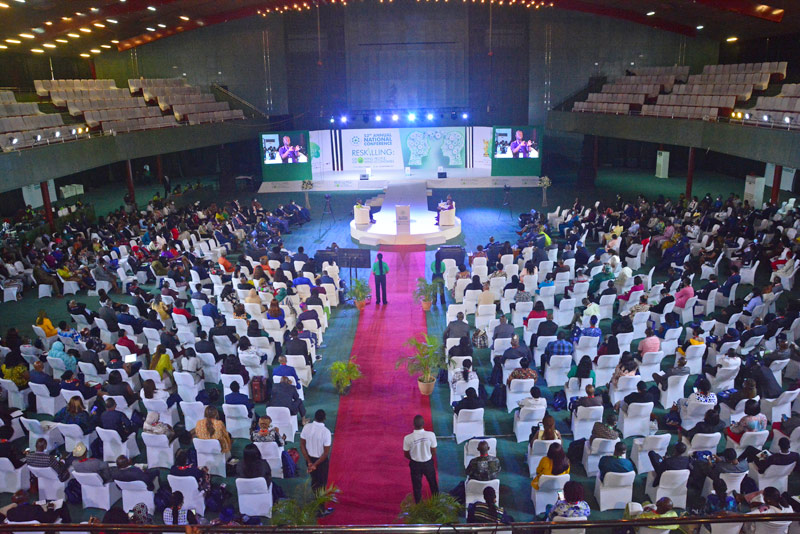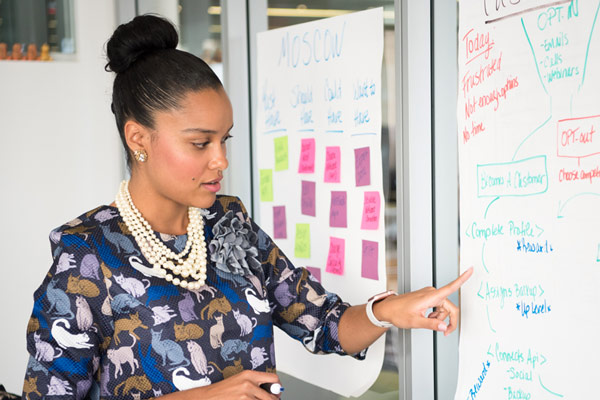
Global Disruption is quite the mantra on everybody’s lip in recent times, what does ‘Global Disruption’ mean for a business entity or an individual?
When we talk about global disruption, we relate to the significance and impacts that innovation, technology and business products can have on existing industries. This impact may result in displacement of established players in different industries. Sometimes, you notice new players show up while existing players are running out of town.
Today, every business is affected by global impact irrespective of the size of the business.
What is the driver of rapid and exponential change in the global market?
The pace at which technology is rapidly developing and switching from one thing to another, and people changing rapidly, business models will follow suit. Business, revenue, strategy models will change in line with what is disrupting the global industry.
Innovation, technology and business models keep shifting. Thus, businesses must align their processes and business models to move with the trend. Businesses should look at what is going on in the global space in terms of innovation, technology, processes, strategies and align their strategies to what is going on right now while looking out for ways to remain relevant, else they find themselves in the rear of everything that is happening.
How can organisations proactively anticipate and respond to disruptive trends rather than reactively?
Businesses responding to global disruptions shouldn’t be reactive and taken unawares, they need to look at the global market and emergence of new business products and innovations introduced even if the disruptions are not in play already and ask questions like; what will happen if these business models become valid on global levels?
They should anticipate and pre-empt those things and their effects. This now gets them ready for what is coming. Businesses shouldn’t wait to feel the effect before acting. They should prepare themselves for what can happen. If they don’t ask those questions, they will be caught unaware, as the innovations and transformations have rapid impacts which are stiff. Businesses should keep their eyes open, looking far into the horizon to see the kind of things they should prepare for.
How do you combine proactivity with running on a budget amidst having limited resources and making the best decision?
Innovation comes to play when you have a lot of things that you know you should do but cannot do because you are not able to do it. If you cannot afford the technology that you should have at this point, then you must find other ways/means outside of the technology you cannot afford, even though not having the right technology can limit your processes to some extent.
Therefore, you must think about what else to do and how to do it to remain relevant in business.
How do you ensure that the workforce is aligned with the evolving goals of the organisation during disruptive times?
Organisations must establish what they want the employees to align themselves to. They must identify that all individuals have their different interests and give them reasons enough to stay so that they can fulfil whatever it is they are looking for in the place they are in right now. Meeting the employee interest is meeting the interest of the organisation. If organisations help employees to achieve that thing they want to achieve, they will find no reason to not want to align.
Leadership must understand the goal, the kind of people needed to achieve the goals, how they need them to think and respond, what perspectives they need them to have when it comes to real world situations and business.
When organisations identify such people and meet their expectations, they do not have the problem of getting them to align with the goals, expectations and standards of the organisation, because employees want to do what you want them to do if it aligns with what they want to do.
What is the role of Ai and how can it be leveraged in maintaining sustainable business operations and rapid changes, Is AI here to stay? Should people learn to use the tool?
The way business models are structured has made technology indispensable. Artificial Intelligence (AI) will do what it can do and will do better than regular people sitting down. Therefore, we must identify and understand that routine things can be done using technology without wasting time and resources. Meanwhile, there are things that require the human face and human thinking to get those things done well.
Technology should be adopted in some areas of business where efficiency, speed and technology are needed. For example, the HR recruitment processes can be done using technology.
There are people who use technology and those who develop technology, whereby most people use technology while few are developers of technology. The people who use technology are more critical, because if technology isn’t doing something as well as you want it to do, you will move to other options immediately.
Emerging business owners must ask the question; what is the thing that creates sustainability and keeps their businesses relevant in whatever industry they are in and answer the questions, as businesses can no longer be run in the traditional ways any longer. They must Identify the tools required and the people required, as business models have changed.
“This thought leadership piece is culled from the CIPM radio programme, ‘The Office.’ The opinions expressed in this article are solely those of the Guests and do not represent the views of CIPM.”



